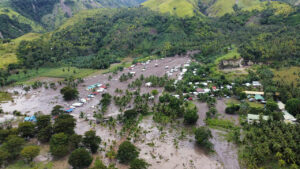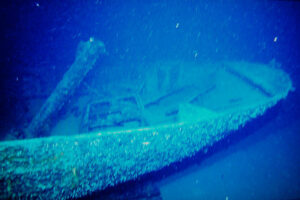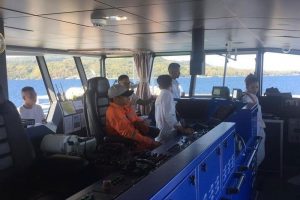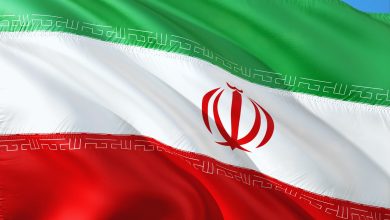Ilocos Norte leads in poverty reduction: IT-BPM and tourism will lead the way
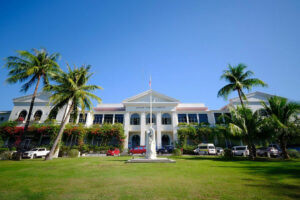
(Part 2)
Laoag and the surrounding areas have been identified by the leaders in IT-BPM (information technology-business process management) in their most recent strategic planning exercise as one of the next-tier cities to locate BPO (business process outsourcing) enterprises in both the voice and non-voice sectors, thus giving rise to the growth of the real estate and construction industries.
Ilocos Norte was launched as one of the digital cities in the Philippines, handpicked by the IT and Business Processing Association of the Philippines, the Department of Information and Communications Technology (DICT), and leading property consultants Leechiu Property Consultants.
The IT-BPO services identified are customer care, technical support, travel services, and telemarketing in the voice sector. In non-voice, the existing or potential locators are in financial and accounting, analyst, transcriptionists, human resources, and business-to-business customer support. As an undersea telecom cable is expected to be built from the US to the town of Pagudpud, Laoag can position itself to be one of the leading candidates for the location of data centers which can generate thousands of jobs for its annual supply of some 1,400 college graduates in a work force of 580,000 with a literacy rate of 98%.
A most exciting possibility for Ilocos Norte was presented by Alex Aquino, a top executive of a communications technology company based in Singapore, about how it can position itself to be one of the leading sites for data centers in the Southeast Asian region.
There are now 11 in-service international submarine cable systems connecting the Philippines, and another five transpacific subsea cables under construction, including ADC, Apricot, Bifrost, Cap-1, and SEA-H2X. A newly announced Asia Link Cable (ALC) has two landing stations in the Philippines, and a still unannounced system expected to be in service by the end of 2025 has potentially four landing points in the Philippines. Recent geopolitical developments and resource constraints in other countries have made the Philippines the new International Submarine Cable Hub in the Asia-Pacific region.
Fortunately for Ilocos Norte, one of these submarine cables, owned by Amazon and META, will be landing in Pagudpud, the famous beach resort in Ilocos Norte. The powerful internet connections that will be made possible by these cables will surely attract data centers to locate in Laoag and surrounding areas. Already there are three possible sites prepared to receive these data centers, i.e., the Fort Ilocandia Tourism Economic Zone, the VENVI IT Hub, and the VYV IT Hub. I am sure that some of the large real estate developers like Megaworld, Ayala Land, Federal Land, and many others can be motivated to build their own IT-centered communities in Laoag.
Additionally, the Mariano Marcos State University (MMSU) is the first Special Economic Zone Institute (SEZI) in the entire Philippines. This high-quality state university can be expected to significantly increase the number of IT professionals that will be needed by the data centers.
As is true of the entire nation in which services account for some 70% of GDP, Ilocos Norte has high potentials in consumer services, healthcare services, educational institutions at all levels, hospitals and other healthcare institutions, and research institutes. Already there are three international BPO enterprises; three telecommunications companies; two national real estate developers; eight energy and utilities companies; five national and two transnational cargo and courier companies; three transnational power generators; one national, six provincial, and 11 private healthcare facilities; one state and one private university; three national and local private colleges; 111 hotels and resorts and 222 alternative lodging facilities; over 322 restaurants and food establishments; over 36 financial institutions; and over 40 national and 30 transnational consumer services. There are opportunities for investments in higher learning institutions; healthcare services; research institutes in biotechnology, life sciences, and pharmacy; and additional investments in retail, food and beverage, and transportation services.
The greatest potential in the services sector for Ilocos Norte, however, is in hospitality or tourism. In a presentation made by Dr. Maria Cherry Lyn Rodolfo, the leading tourism economist in the country, during the investment forum cited above, the following data illustrate the potential for both domestic and foreign tourism as the economy recovers from the pandemic: In 2019, there were over 3.8 million tourist arrivals, 90% local and 10% foreign in Ilocos Norte. Total tourism receipts were P14.8 billion. The region contains some 4,104 rooms for tourists, having experienced an 8.5% annual growth in tourism capacity. From 2012 to 2019, there was a total increase of tourism traffic of 1,394%.
The province has many tourism assets including 155.37 kilometers of coastline in nine coastal towns. Among the 25 Most Beautiful Beaches of the World listed by World Travel and Leisure in 2021 was Saud Beach in Pagudpud. In 2018, Ilocos Norte was ranked the Best Tourism-Oriented Province in the Philippines. There exist very well-organized tourism industry associations in the province. As regards the human resources pool, some 15% of college graduates in the province specialized in tourism and hospitality management in 2019 while some 30% of tech-voc graduates were in hospitality-related courses.
Ilocos Norte has a very diversified tourism portfolio. Although the beaches are the main attractions, especially for the tourists coming from Northeast Asia, the product portfolio consists of cruise and nautical tourism, sun and beach, cultural, nature and adventure, bike tours, gastronomy, and birdwatching (Paoay Lake National Park, Mt. Kalbario-Patapat National Park, and Adams). Viewed from another angle, Ilocos Norte has a polycentric resource-based development framework. Tourism zones can be based on “golden sun tourism” which comprises the northern tourism district, coastal tours, and energy areas; or on aquapolis, i.e., port tour, logistics, marine tourism and coastal tourism; ecopolis, i.e., nature tourism, ecotourism park, protection and production and mineral clusters; and acropolis, i.e., mountain tourism and agritourism.
As regards geography, the greatest advantage is that it is the gateway to the Philippines for the rich tourists from such Northeast Asian countries as South Korea, China, Japan, and Taiwan. In 2019, the top five markets of the Philippines for foreign tourists were South Korea, China, the USA, Japan, and Taiwan. Arrivals for foreign tourists were 98% by air. The Laoag International Airport has certain advantages in attracting the tourists from the Northeast Asian countries. It can accommodate Airbus 320/321 and Boeing 737-800 planes, is open to both charter and commercial planes. There are clusters of rooms within close proximity, which is critical in the value chain of charter operations. Ilocos Norte offers a diverse portfolio of gastronomy, nature-based and adventure, marine/coastal, cultural/heritage, and rural and farm tourism. It would be logical that efforts to attract foreign tourists to Ilocos Norte should focus on the Taiwanese, Chinese, South Korean, and Japanese travelers. In many ways, Ilocos Norte should be for these rich “tiger” economies what Spain is to the Northern European countries. Its beaches like those in Pagudpud should be swarming with Northeast Asian tourists in the same way that the Costa Brava and Costa del Sol of Spain attract millions of Germans and Scandinavians yearly.
Since tourism is one of the most powerful engines of employing people, especially in the countryside where the tourist attractions usually are located, I can already be certain that before the end of the Marcos Jr. administration, the poverty incidence of Ilocos Norte will be zero.
Bernardo M. Villegas has a Ph.D. in Economics from Harvard, is professor emeritus at the University of Asia and the Pacific, and a visiting professor at the IESE Business School in Barcelona, Spain. He was a member of the 1986 Constitutional Commission.
